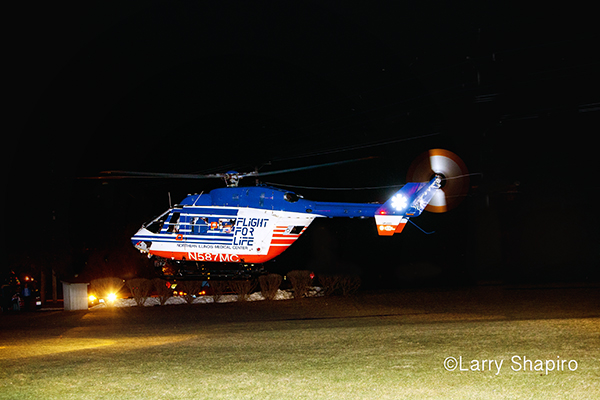Here are two images from an on-scene patient pickup in Arlington Heights (IL) after a serious motor vehicle accident. The medivac is from Flight for Life based in McHenry, IL. The ability to take helicopter photos at night is dependent on the distance that you find yourself from the aircraft if it’s a very dark environment and you have to illuminate the scene with a flash. If there is an abundance of ambient light, then today’s sophisticated digital cameras with extra low light sensitivity make it possible to create a dramatic image with existing light.
This scene was in an open field with virtually no scene light except for a couple of spotlights, car headlights, and one flood light from a fire engine. I used my on-camera flash set to manual so the sensor wouldn’t be fooled by the bright reading that would come back from the highly reflective surfaces.

The additional light on the ground in this next image was from the helicopter’s underbody lights as it lifted off. Again, the aircraft itself was in total darkness.

I’m at such a distance from the helicopter that my flash will not create any interference for the pilot. The instantaneous flash of light is minuscule when compared to the scene lights pointed toward the helicopter and the bright LED emergency lights on the apparatus.